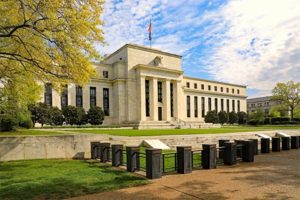Fannie Mae and Bank of America: Breaking Up Not So Hard to Do
Why is it that the big banks always seem to win in this country? They get bailed out when they screw up; they get rewarded for failure; and they just seem to get bigger, fatter and more selfish all the time.
And why does our government always feel the need bow to their demands, even to the point of force-feeding these “too big to fail” institutions with our tax dollars — essentially stuffing more and more of our money down their already full but undeserving gullets?
Here’s a tale that begs those very questions. Welcome to the amicable divorce decree hammered out between the Bank of America and Fannie Mae. Both sides walked away happy while the public paid the bill.
BOA Promises to Change
Earlier this year, Bank of America (BOA) and four other of the country’s largest banks agreed to a $25 billion settlement established among them, the federal government, and 49 states. The agreement contained many promises.
Among them: that BOA and the other banks, in return for relief from various legal challenges, clean up their mortgage servicing operations and reform the way they handle loans in default or foreclosure. (The big five service almost 60 million outstanding home loans.)
Explicit in the settlement, which was brought on by government litigation, was an understanding that the big banks would establish one point of contact so homeowners wouldn’t be forced to start from scratch each time they called for help. This one area was revealed to be a universal frustration faced by delinquent borrowers attempting to modify their loans o or explore options to avoid losing their homes.
Essentially, this reform alone was supposed to lower default rates, prevent foreclosures, and ultimately reduce losses for the actual holders of the mortgages that the banks were being paid to service.
Fannie Mae Wants Out
Meanwhile, back in Washington, the Federal National Mortgage Association – Fannie Mae, a taxpayer-owned entity since 2008 – was thinking along similar lines, i.e. that enhanced loan servicing, which involved closer and more frequent contact between a delinquent mortgager and the servicer, would ultimately lower the nation’s rising default rate.
This was a particularly important concept for Fannie Mae, considering that along with the Federal Home Loan Mortgage Corporation (Freddie Mac), it bore the credit risk for almost half the nation’s single-home mortgages, and had already lost more than $157 billion between 2008 and 2011, due to non-performing loans in its retained and guaranteed mortgage portfolios.
So to improve outcomes for its mortgages that were at high risk of default, Fannie Mae inaugurated a strategy called the High Touch Servicing Program. To achieve the program’s stated goals (and according to Fannie Mae’s projections, reduce credit losses by up to 20 percent) it would be necessary to transfer the Mortgage Servicing Rights (MSRs) from institutions like the Bank of America, which could not, or would not, upgrade its level of service, to a group of specialty companies identified as “high touch servicers.”
In essence, Fannie Mae was looking for a better marriage.
These replacement partners, then, would do what the big banks should have been doing all along and indeed promised to do when they signed the agreement this past spring – establish single points of contact for delinquent borrowers and work with them to mitigate defaults and foreclosures so that more people could stay in their homes and Fannie Mae would lose less money.
Breaking Up Doesn’t Mean You Have to be Mean
To transfer these MSRs, Fannie Mae has two ways in which it can proceed: it can choose to simply terminate the servicing contracts for its loans, and loans it guarantees, from those servicers whose performance is found to be inadequate – in other words, it can invoke “cause,” in which case it would not be required to reimburse the poorly performing servicer – or it can proceed “without cause,” in which case it is contractually required to remunerate the servicer according to a specific formula.
Early in 2011, Fannie Mae proposed to transfer from BOA, the mortgage servicing rights to approximately 384,000 high risk mortgage loans that it owned or guaranteed. This particular portfolio had a delinquency rate of approximately 11 percent and Fannie Mae calculated that under BOA’s inadequate servicing paradigm, defaults on these loans would result in credit losses of close to $10.9 billion dollars.
But if the MSRs could be reassigned to “high touch,” specialty servicers, the taxpayer-owned mortgage giant calculated that it could realize credit loss savings ranging from approximately $1.7 to $2.7 billion over the next five years.
Now in a rational universe, one would have expected Fannie Mae to terminate BOA’s servicing agreements “for cause” and not reward what has been universally accepted as its poor performance in servicing its loans. After all, it is axiomatic: there would be no reason to transfer the MSRs in the first place unless BOA’s performance was deemed inadequate.
Just as important, BOA admitted that its servicing record has been insufficient by tacitly agreeing to reform its practices under the agreement it made with the federal and state governments.
And yet the final agreement worked out between Fannie Mae and BOA highlights two sad truths about the banking/mortgage/political nexus that many believe was largely responsible for the nation’s recent financial meltdown: the nation’s big banks consistently get away with their hijinks, and the federal government is a careless steward of the taxpayer’s money.
For in the end, not only did Fannie Mae decide to proceed “without cause,” meaning that it had to pay BOA for its MSRs, it actually paid the bank more than was legally required. Whoa! Wonder how that happened?
Fannie Mae Caves
According to the contract between Fannie Mae and its servicers, when purchasing MSRs “without cause,” a “breakup” payment is set at twice the annual fees that a bank would normally collect on the loans it services. Yet Fannie Mae ended up paying BOA 2.4 times that amount (a total of $421 million), spending millions more than it needed to. Why?
Well, again, according to the servicing contract, BOA had the right to delay a “without cause” contract for up to 90 days, giving it a chance to find an alternative buyer for its MSRs – someone who might have paid more for them than Fannie Mae originally offered.
As unlikely as that scenario would have been, Fannie Mae felt that it had to “negotiate” the price with BOA, fearing that a three month delay in the transfer would have caused additional expenses and make it harder for the new servicers to begin managing the transferred loans.
In other words, not only did Fannie Mae not cancel BOA’s MSRs for cause, which it could have and should have done in order to save taxpayer money, it let BOA bully it into overpaying with the threat that the bank would tie up the transfer in potential costly delays and/or litigation.
According to Fannie Mae, when explaining why it overpaid not only BOA, but many other banks from which it purchased MSRs over the past few years: “If we had not negotiated on price, the existing servicers would have not cooperated, thereby impacting credit losses, the borrower, and the new servicer’s ability to service.”
So there it is – not only does Bank of America not get punished for shoddy service that it already admitted to and promised to fix, it actually gets rewarded for its inadequacy far beyond what is actually necessary by a government-owned entity that haphazardly threw away taxpayer funds in order to potentially save the same taxpayer some possible money somewhere up the maybe road.
Is it any wonder why some people hate the big banks? As well as the government that constantly kowtows to their insatiable greed?


















